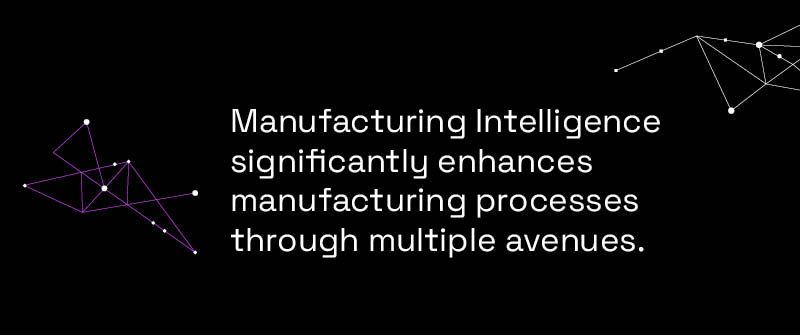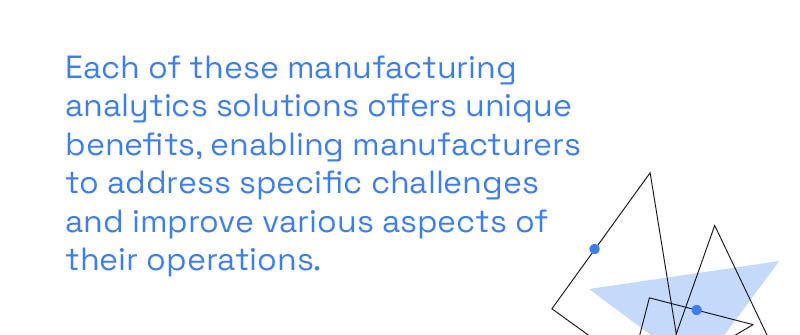
What Is Manufacturing Analytics Software?
Definition and Importance of Manufacturing Analytics Software
Manufacturing analytics software, often referred to as Manufacturing Intelligence or Industrial analytics software, is a robust tool designed to provide actionable insights from the vast amounts of data generated within manufacturing processes. By leveraging these insights, businesses can optimize operational efficiency, reduce waste, increase productivity, and enhance overall product quality. In today’s data-driven world, incorporating a Manufacturing Data Analytics solution is no longer optional but a necessity for staying competitive, as it aids in decision-making and quality tracking.
Key Features and Functionalities
This software integrates with a variety of data sources within the manufacturing ecosystem, including Internet of Things (IoT) devices, enterprise resource planning (ERP) systems, and manufacturing execution systems (MES). To effectively utilize these software systems, companies must overcome organizational challenges, engage the right stakeholders, and ensure that vendors possess specific knowledge of the unique processes involved in manufacturing. Key features often include real-time data monitoring, predictive analytics, quality management, maintenance scheduling, and supply chain optimization. These functionalities empower manufacturers to make informed decisions swiftly, react to potential issues before they escalate, and continuously improve their processes.
How It Enhances Manufacturing Processes
Manufacturing Intelligence significantly enhances manufacturing processes through multiple avenues. For instance, predictive maintenance capabilities can predict equipment failures before they happen, drastically reducing downtime and maintenance costs. By tracking and measuring machinery efficiency through operational equipment effectiveness, manufacturers can collect data from various sources, such as operators and built-in sensors, to analyze downtime, performance issues, and overall productivity. Quality control analytics help in spotting defects early in the production line, thereby lowering the rate of defective products. Furthermore, supply chain analytics ensure raw materials are available when needed, preventing costly delays. By incorporating Industrial analytics software, manufacturers gain a comprehensive understanding of their operations, making it easier to identify inefficiencies and areas for improvement.

Benefits of Manufacturing Analytics
Overview of Key Benefits
Manufacturing analytics offers a wealth of benefits that can revolutionize the way manufacturing companies operate. By leveraging predictive analytics and machine learning algorithms, manufacturers can gain deep insights into their manufacturing processes. These insights enable them to identify areas for improvement, optimize operations, and make data-driven decisions that enhance efficiency and productivity. Moreover, manufacturing analytics can significantly boost customer satisfaction by ensuring higher product quality and more reliable delivery times. In essence, manufacturing analytics empowers companies to transform raw data into actionable intelligence, driving better business outcomes and maintaining a competitive edge in the industry.
Impact on Efficiency and Productivity
The impact of manufacturing analytics on efficiency and productivity cannot be overstated. By meticulously analyzing data from various sources, manufacturers can pinpoint bottlenecks and inefficiencies within their production workflows. This detailed analysis allows for the optimization of processes, leading to increased productivity and reduced operational costs. One of the key metrics improved by manufacturing analytics is overall equipment effectiveness (OEE). By predicting equipment failures and scheduling timely maintenance, manufacturers can minimize downtime and ensure that machinery operates at peak performance. Additionally, the reduction of waste and enhancement of operational efficiencies contribute to a more streamlined production process. These improvements not only lower costs but also enhance customer satisfaction by ensuring timely and high-quality product delivery.
Types of Manufacturing Analytics Solutions
Overview of Different Types
Manufacturing analytics solutions come in various forms, each tailored to address specific aspects of the manufacturing process. Here are some of the most common types:
- Predictive Maintenance Analytics: This solution uses machine learning algorithms to forecast equipment failures before they occur. By predicting when maintenance is needed, manufacturers can schedule repairs proactively, reducing downtime and extending the lifespan of machinery.
- Quality Control Analytics: Focused on monitoring and controlling product quality, this solution uses data analytics to detect defects early in the production process. This proactive approach minimizes the risk of defective products reaching customers, thereby improving customer satisfaction and reducing returns.
- Supply Chain Analytics: This type of solution optimizes supply chain operations by analyzing data to improve delivery times and reduce costs. By ensuring that raw materials and components are available when needed, manufacturers can avoid production delays and maintain a smooth workflow.
- Energy and Resource Optimization Analytics: Aimed at enhancing sustainability, this solution uses data analytics to optimize the use of energy and resources. By identifying areas where energy consumption can be reduced, manufacturers can lower costs and minimize their environmental footprint.
- Manufacturing Execution System (MES) Analytics: This solution integrates with MES to provide real-time insights into manufacturing operations. By analyzing data from the production floor, manufacturers can improve productivity, reduce waste, and ensure that production schedules are met.
Each of these manufacturing analytics solutions offers unique benefits, enabling manufacturers to address specific challenges and improve various aspects of their operations. By selecting the right combination of solutions, companies can achieve significant improvements in efficiency, productivity, and overall business performance.

What Are The Best Free Manufacturing Analytics Software Options?
Manufacturing analytics software can dramatically transform how your business operates by leveraging manufacturing data visualization to optimize production processes and enhance decision-making. However, the investment in such software can be substantial. What if you could access powerful industrial analytics software for free? Yes, it’s possible, and several top-tier options are available in the marketplace.
Overview of Top Free Options Available
Among the leading free options are Google Data Studio, Power BI Desktop, and RapidMiner. These tools provide robust analytics capabilities without the associated costs of premium software. Google Data Studio offers seamless integration with other Google services, allowing you to visualize and share data effortlessly. Power BI Desktop, from Microsoft, is highly regarded for its intuitive interface and comprehensive data connectivity. RapidMiner excels in data mining and predictive analytics, giving you the insights needed to stay ahead in your manufacturing processes.
Comparative Analysis of Features
While each of these free tools has its strengths, they also have distinct differences. Google Data Studio shines in terms of ease of use and social media integration, making it ideal for data visualization and reporting. Power BI Desktop boasts advanced analytical functions and broad data source connectivity, which is perfect for in-depth business intelligence needs. RapidMiner offers sophisticated machine learning capabilities, providing predictive insights that can dramatically enhance your operations.
Pros and Cons of Free Software
These free options have numerous advantages, such as no initial financial investment and a lower barrier to entry. However, they may come with certain limitations. Free versions often have restricted features compared to their paid counterparts, and there can be limitations on the amount of data they can process. Additionally, support and updates may not be as robust as those offered with paid versions. Still, for many businesses, the benefits far outweigh these limitations, making free software a viable option for those starting their analytics journey.
Which Companies Are Leading In Manufacturing Analytics?
In today’s competitive landscape, several companies in the manufacturing industry are paving the way with innovative Manufacturing Intelligence software and advanced industrial analytics software. These leaders are transforming the manufacturing sector by leveraging cutting-edge technology to drive efficiency, reduce costs, and boost production capabilities.
Top Companies in Manufacturing Analytics
Among the frontrunners in the manufacturing analytics space are Microsoft, Siemens, IBM, SAS, and Honeywell. These companies have long histories of delivering robust solutions tailored to meet the complex needs of manufacturing environments.
Microsoft Analytics Tools
Microsoft’s analytics ecosystem, including Power BI and Microsoft Fabric, is revolutionizing how manufacturers manage and interpret data. These tools offer seamless integration across systems, enabling real-time analytics, data consolidation, and actionable insights. Power BI empowers manufacturers to visualize their data in intuitive, customizable dashboards, while Microsoft Fabric provides an end-to-end platform for advanced data management, making it easier to scale operations and extract deeper insights from complex datasets—all without the complexity of traditional software solutions.

Siemens
Siemens offers its comprehensive suite of analytics tools through its MindSphere platform, an IoT-based open cloud platform that allows manufacturers to collect and analyze large volumes of production data. This platform helps companies optimize their manufacturing processes, predict downtime, and ensure optimal performance.
IBM
IBM’s Watson IoT platform provides advanced manufacturing analytics, focusing on predictive maintenance, quality management, and asset performance. Leveraging AI and machine learning, IBM helps manufacturers make informed decisions quickly and accurately.
SAS
SAS offers an array of analytic solutions specifically designed for manufacturing. From quality improvement to supply chain optimization, SAS enables companies to analyze data in real time, enhancing both efficiency and productivity.
Honeywell
Honeywell’s MatrikonOPC Tunneller and Asset Performance Management (APM) solutions help manufacturers bridge connectivity gaps and gain insightful procurement data analytics. Honeywell focuses on delivering actionable data that drives performance improvements across production lines.
Market Reputation and Customer Feedback
Customer feedback consistently highlights the reliability and innovation of these companies’ products. Microsoft, with its Power BI and Fabric platforms, is praised for providing accessible, scalable solutions that empower manufacturers with real-time data insights and advanced analytics. Siemens is lauded for its comprehensive data integration capabilities, while IBM’s AI-driven insights remain key differentiators. SAS stands out for enabling real-time data analytics, and Honeywell is recognized for delivering seamless connectivity across production environments.
In conclusion, partnering with industry leaders like Microsoft, Siemens, IBM, SAS, and Honeywell in manufacturing analytics can propel your business forward, making operations more efficient and effective. Explore these top solutions to enhance your manufacturing intelligence and drive impactful results across your operations.
What Are Some Examples Of Manufacturing Analytics In Action?
What are some examples of manufacturing analytics in action?
Embracing manufacturing analytics can revolutionize your operations, driving significant improvements and efficiencies. Let’s delve into some compelling examples that illustrate the transformative power of these technologies.
Case Studies Demonstrating Successful Analytics Application
One notable example is a leading automotive manufacturer that integrated advanced analytics into its production lines. By leveraging data from IoT sensors and predictive maintenance algorithms, they were able to identify potential equipment failures before they occurred. This not only minimized downtime but also dramatically reduced maintenance costs.
Another example comes from the pharmaceutical industry, where a company implemented manufacturing analytics software to optimize its production process. By analyzing production data in real-time, they managed to increase their throughput by 15% while also maintaining strict regulatory compliance, ultimately leading to significant cost savings and improved product quality.
Quantifiable Benefits Achieved Through Analytics
Many organizations have realized substantial benefits through the application of manufacturing analytics. For instance, a global electronics company reported a 20% increase in production efficiency and a 30% reduction in waste after employing machine learning algorithms to monitor and optimize their manufacturing processes.
Similarly, a consumer goods manufacturer achieved a 25% improvement in energy efficiency by utilizing analytics to monitor energy consumption patterns and implement energy-saving measures. These quantifiable benefits underscore the potential of manufacturing analytics to deliver substantial ROI.

Innovative Uses and Future Trends
The future of manufacturing analytics is brimming with possibilities. One emerging trend is the use of AI-powered analytics to drive autonomous manufacturing systems, where machines can make real-time decisions to optimize production without human intervention. Additionally, the integration of augmented reality (AR) with manufacturing analytics can enhance maintenance operations, providing technicians with data overlays and detailed instructions for complex repairs.
Moreover, the convergence of Industrial IoT and manufacturing analytics is expected to further streamline operations, enabling unprecedented levels of automation and efficiency. This integration will not only reduce costs but also enhance the agility and scalability of manufacturing processes.
Ready to harness the power of manufacturing analytics to transform your operations? At P3 Adaptive, we specialize in unifying complex data into a single, cohesive view, turning fragmented information into actionable insights. Our expert consultants are here to help you make fast, confident decisions and unlock the full potential of your manufacturing processes. Contact P3 Adaptive Today!
Get in touch with a P3 team member